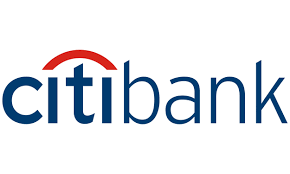Navigating the Wired World: The Crucial Role of Cross Connects in Modern Data Centers
- Platocom

- Apr 18, 2024
- 6 min read
Updated: Apr 25, 2024

As technology advances, the demand for faster, more secure data transmission is rapidly increasing, highlighting the crucial role of cross connects in modern data centers.
Cross connects, or 'xcons,' are fundamental components in today's fast-evolving data center environments. Made from either copper or fiber optic materials, these physical cable links connect two points within a data center directly—bypassing public exchanges and external networks. This direct connection ensures enhanced data security, efficiency, and with high speed.
Are You Paying for Unused Circuits?
In this blog, Platocom aims to raise awareness about the costs associated with unused ("dead") circuits, encouraging businesses to reassess their data center expenditures. We will also delve into the nuances of cross connects, exploring how they differ from traditional network connections and why they are becoming increasingly important for businesses that prioritize data security, require high-speed data transfers, and wish to maintain optimal control over their network architecture. We will also address a critical question for many businesses: Are you paying for unused circuits?
By understanding the unique advantages of cross connects over traditional routing and switching, IT professionals and businesses can make informed decisions that lead to improved performance, security, and cost management in their data center operations.
Platocom specializes in cross connects and we can also do an audit for you.
What Are Cross Connects? What Are Their Benefits?

Cross Connect is a physical cable link between two points within a data center. It is internal; this link does not pass through a public exchange or external network. They can be made from copper or fiber optic cables, depending on the required speed and bandwidth. By facilitating a point-to-point connection, cross connects reduce latency, enhance security, and improve the reliability of the data transmission.
Cross Connect Benefits in a Nutshell:
Cross connects offer directness and path isolation, significantly reducing latency and enhancing both speed and security compared to traditional network connections that often involve multiple routers and switches.
Cross connects increase reliability by providing a simple point-to-point connection that minimizes failure points and enhances security by keeping data transmission confined within the data center's controlled environment.
Furthermore, cross connects are more cost-effective over time by eliminating external bandwidth usage fees and offer scalability and flexibility, allowing adjustments without significant infrastructure changes.
Understanding Cross Connects in Data Centers: A Key Component for Enhancing Connectivity

In the complex ecosystem of a data center, efficient data transfer and connectivity are paramount. This is where cross connects, a crucial yet often overlooked component, play a vital role (and why we are so passionate about this). Cross connects (physical cables) connect servers, routers, switches, or any two devices that need to communicate within the same facility.
How Cross Connects Differ From Other Types Of Network Connections
Here’s a breakdown of how cross connects differ from other network connections:
Directness and Path Isolation:
Cross Connects: Provide direct cable connections between two devices in a data center, isolating data transmission from general network traffic and enhancing speed and security.
Traditional Network Connections: Often involve multiple routers and switches, increasing latency, packet loss risk, and exposure to security vulnerabilities.
Latency:
Cross Connects: Significantly reduce latency by providing a direct link between endpoints, crucial for real-time applications.
Traditional Network Connections: Generally have higher latency due to the data passing through multiple hardware and software layers.
Reliability:
Cross Connects: Offer increased reliability with a simple point-to-point connection that minimizes failure points.
Traditional Network Connections: More complex with multiple devices, increasing the potential for connectivity issues.
Security:
Cross Connects: Enhance security by confining data transmission within the controlled environment of a data center, minimizing interception risks.
Traditional Network Connections: More vulnerable to security threats, especially when data traverses public or less secure networks.
Cost Efficiency:
Cross Connects: More cost-effective over time by eliminating external bandwidth usage fees.
Traditional Network Connections: Can incur higher costs due to bandwidth usage over long distances or through multiple networks.
Scalability and Flexibility:
Cross Connects: Offer easy scalability and flexibility, allowing quick adjustments to connections without significant infrastructure changes.
Traditional Network Connections: Scaling up often requires extensive configuration changes, additional hardware, or more bandwidth, which can be cumbersome and time-consuming.
Who Benefits from the Use Cases of Cross Connects?
The sectors benefiting from cross connects share a common need for handling high volumes of data securely. Banks and streaming services, for example.
Cross connects significantly reduce latency by providing a direct, dedicated line, thereby enhancing the speed and security of data delivery. This direct connection is crucial for industries that depend on real-time data access and transmission, ensuring that data not only moves quickly but also remains protected from potential breaches associated with less secure, indirect networking paths.
Financial Services and Trading: High-frequency trading platforms using cross connects for faster transaction speeds. Faster data transmission can lead to better trade execution prices, improved data quality for decision-making, and enhanced overall system reliability.
Content Delivery Networks (CDNs) e.g., Netflix: Enhancing user experience by speeding up content delivery. CDNs benefit from cross connects by being able to directly and securely distribute content to end-users without passing through multiple networks which can introduce latency and potential points of compromise.
Gaming and Esports: The gaming industry, especially esports, demands real-time performance with no latency for competitive integrity and player experience.
Telecommunications e.g. T-mobile: Telecos use cross connects to link to other telecom networks, data centers, and services within the same facility without the need for external routing. This enhances the efficiency of the data flow and improves the quality of the service provided.
Healthcare: In healthcare, where data sensitivity and privacy are paramount, cross connects provide a secure way to manage and exchange medical data without exposing it to public internet threats.
Cloud and Managed Services: These providers often need to connect to various networks, services, and clients within a data center. Cross connects allow these connections to be made quickly and securely, optimizing service delivery and scalability.
E-commerce: Cross connects ensure that customer experiences remain fluid and responsive, particularly during peak times, thereby helping maintain sales momentum and customer satisfaction.
Pricing XCon (Cross Connects): How Much Does it Cost?
The cost of cross connects varies based on the type of connection, the data center's location and tier, and the presence of any additional services. While larger data centers in major metropolitan areas might charge more, particularly for fiber optic connections, smaller, regional data centers might offer more competitive rates. Costs also encompass one-time setup fees and monthly recurring charges, which can be influenced by contract length and market competition.
For accurate pricing, it's best to contact data centers directly or consult with a data center services broker such as Platocom who can provide quotes and help negotiate contracts including SLA.
The large data centers may ask you to lease a full 12-duplex fiber panel for around $1,200-2,500/month, which includes everything coming off if it. This means you might start at paying $2,500 for one cross connect (xcon). This quickly adds up! (And why it's so important to audit and find out if you are paying for unused circuits).
Smaller data centers, providers on the market may be in the $125-200/mo range per fiber pair, and $250-350/mo each in larger markets. Prices then change based on commitment and term.
A more in-depth view on what factors into the pricing of cross connects. Reach out to Platocom and we’ll do our best to try and help you.
Data Center Location and Tier: Pricing can vary significantly depending on the data center's geographic location and its tier rating. Data centers in major metropolitan areas like Metropolitan D.C (Northern Virginia, "NoVa"), San Francisco, or Chicago might charge more than those in less densely populated areas. Additionally, higher-tier data centers (Tier 3 and 4), which provide better infrastructure and reliability, might also charge more for cross connect services.
Type of Connection: The cost of a cross connect can depend on whether it's a copper, coaxial, or fiber optic connection. Typically, fiber optic cross connects are more expensive due to the higher speeds and bandwidth they support.
One-time Setup Fees and Recurring Charges: Generally, data centers charge a one-time setup fee for installing a cross connect. This fee covers the labor and materials required for the installation. Additionally, there is usually a monthly recurring charge for maintaining the cross connect. These fees can range from as low as $50 to several hundred dollars per month, depending on the data center and the specifics of the service.
Contract Length: Some data centers might offer discounts based on the length of the contract for the cross connect. Longer-term contracts might come with lower monthly rates compared to month-to-month agreements.
Market Competition: In regions with more data centers, there might be more competitive pricing due to the higher number of options available to customers. Conversely, data centers with little competition can sometimes charge more.
Additional Services: Some data centers might bundle cross connects with other services like power, cooling, and bandwidth, which can affect the overall cost.
Are You Paying too Much for Your Cross Connects?
For businesses concerned about their data center operations and costs, particularly those wondering if they are paying for unused circuits, Platocom offers audit services. We can help you with the following:
Are you paying for unused circuits?
Do you know how much you are paying for unused circuits?
How do you find out if you are paying for unused circuits?












Comments